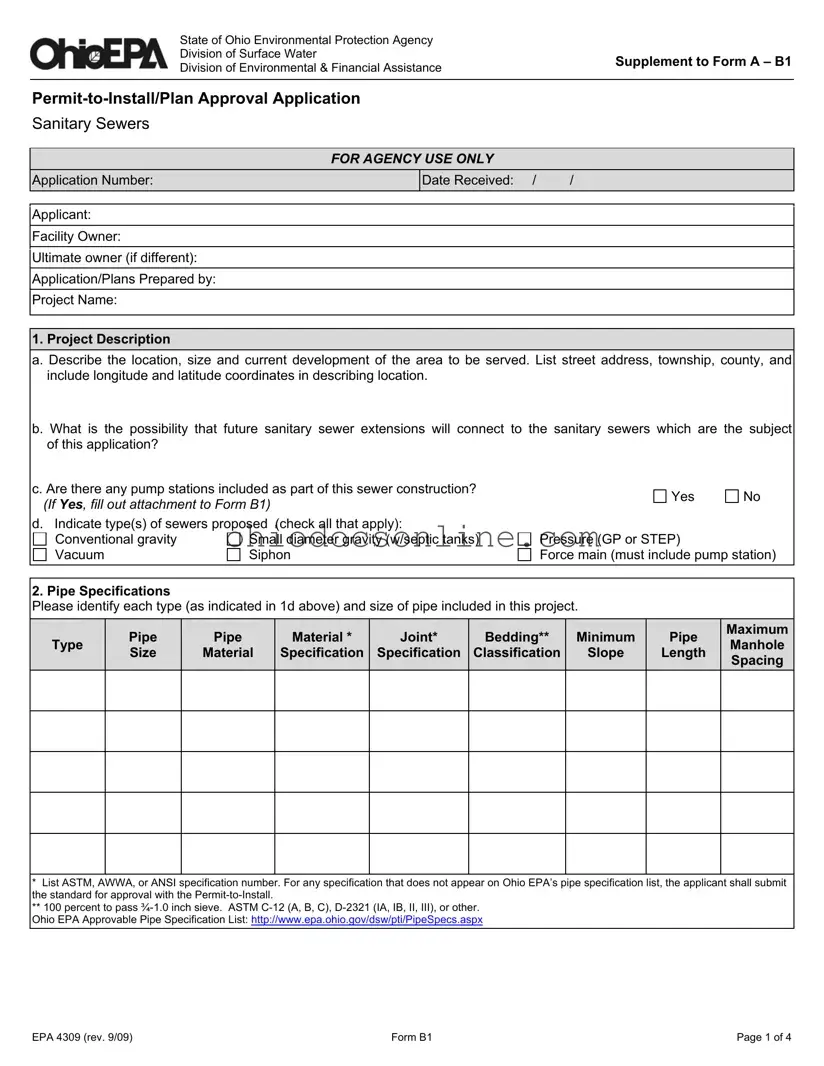Ohio Epa 4309 Template in PDF
The Ohio EPA 4309 form serves as a critical document for those seeking to apply for a permit to install or gain plan approval for sanitary sewer systems in Ohio. This form requires detailed information about the proposed project, including its location, design specifications, and anticipated flow rates. Understanding the nuances of this application process is essential for ensuring compliance with state environmental regulations and facilitating efficient project development.
Open Editor
